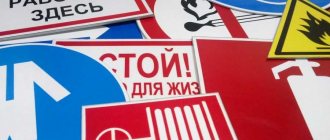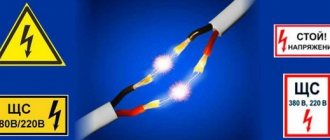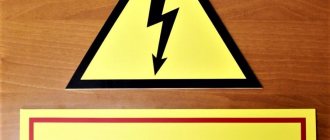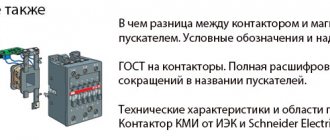Safety signs are illustrations of a set shape and various colors that depict symbols and inscriptions for a special purpose. They are used to notify a person about the prohibition or permission of specific maneuvers at certain objects, as well as the probable danger that may arise there. With their help, the likelihood of harmful effects on human life is reduced. How are posters and safety signs divided and what are they intended for? Is their placement necessary? Let's consider.
Signal markings - what are they?
To identify dangerous risk zones at industrial facilities and minimize injuries and accidents at work, there are special warning markings. They are manufactured according to certain requirements established by international standards.
Signal marking is a color graphic image, presented in the form of striped multi-colored tape, which is used to fence off dangerous areas. They are white-red, yellow-black, white-green. Thanks to these identification markings, order is regulated in the work area.
What are signal colors for?
To ensure that production processes are carried out normally and without accidents, certain signal colors are used on safety signs. Seeing them from afar, a person will immediately understand their purpose and character by color. Each color has its own meaning, allowing a person to determine the type of possible threat at the site. What are the signal colors:
- Red - prohibited, threat;
- Yellow - possible danger;
- Blue - informational purpose;
- Green - safety.
What safety posters and signs are there?
They are used in absolutely all areas of human activity. Classification of posters and safety signs occurs by nature and type. Let's look at them.
According to the nature of application, posters are divided into:
- Permanent;
- Portable.
Types of safety posters and signs:
- Basic;
- Additional;
- Combined;
- Group.
What safety signs are the main prohibitory and warning signs?
These include signs that contain nominatively expressed requirements. They are used individually or in combination with others.
Additional signs - they contain explanatory inscriptions. They are usually used together with the main ones.
Labor safety signs
One of the ways to protect personnel, as well as other persons at the site, is the use of occupational safety signs. Their presence is mandatory not only in production, but also in the office, shopping center, and various public spaces.
The main regulatory document defining the rules for placing safety signs is GOST 12.4.026-2015. This is an international standard, observed not only in Russia, but also abroad.
Purpose of safety signs
The main purpose of occupational safety signs is to attract attention, warn of potential danger, and point out something. For the most part, occupational safety signs are plates of various shapes with a pattern on a contrasting background.
Inscriptions are used on them extremely rarely. This is due to the fact that it is necessary to convey information in the simplest and most intuitive form possible. Roughly speaking, a person looked and, even without knowing for sure what safety signs indicate, he can easily guess.
But it’s not enough to guess and assume; you need to clearly know the purpose of each of the signs. And for this it is necessary to conduct lectures on labor protection in the organization, which will reduce the risk of injuries, occupational diseases, and emergency situations.
Effectiveness in reducing injuries can only be achieved through an integrated approach to occupational safety, that is, training, instructions, timely information and warning, namely the use of signs.
But they need to be used wisely; each sign has its own location.
Types of occupational safety signs
There are several approaches to grouping occupational safety signs. The most common classification is by purpose. We will analyze it in more detail below. There are other ways of dividing:
- According to significance, which, in turn, are divided into basic (used independently), additional (only together with another sign) and combined.
- Based on reflectivity, they are divided into non-luminous, reflective or photoluminescent. The last 2 can be installed in low light conditions or intermittent absence of light. These include the “Exit” sign.
- According to their design, they are divided into three-dimensional and flat.
For greater clarity, colors are defined that correspond to certain groups of safety signs, corresponding colors are defined and contrasting white or black colors are used as the background:
- red;
- yellow;
- blue;
- green.
Those signaling danger or prohibiting certain actions are distinguished by bright colors: red or yellow.
Those that are informational in nature are highlighted in blue. Green ones indicate emergency exits and directions in which you need to move to get to safety. These places and the optimal path to them from any point are taken into account at the stage of construction of the facility.
Safety signs - types, design
All warning signs are created in accordance with approved interstate standards. Each of them has its own form, structure, and execution. In addition, they are divided according to their functional purpose.
The shape of the sign can also determine its significance. The following forms are used for this:
- Round - prohibitions;
- In the shape of a triangle - a warning;
- Square - prescription;
- In the shape of a rectangle - pointers.
According to the structure of execution, signs are:
- Flat type;
- Volumetric type.
What types of safety posters are divided into according to the material used?
Based on the type of raw material used, safety signs are divided into non-luminous, retroreflective, and photoluminescent.
Responsibility for the absence of safety signs
For failure to comply with safety rules, the employer faces a fine, including if there are no occupational safety signs. According to Art. 5.27.1 of the Code of Administrative Offenses of the Russian Federation, the fine for the absence of at least 1 required sign is up to 80,000 rubles.
And the fact of the presence of signs is recorded in a special journal; this requirement is not mandatory, but recommended. During inspections, their presence and correct placement is one of the mandatory points that inspectors pay attention to.
What groups are the main safety signs divided into?
Each sign can be classified into a specific group according to its purpose:
- Prohibiting;
- Warning;
- Prescriptive;
- Index;
- Evacuation;
- Fire protection;
- Medical and sanitary purposes.
Prohibition signs
Signs of this type prohibit the use of switching equipment during any work in a certain area. These include - “Do not turn on! People are working,” “Don’t turn it on! Line work”, “Do not open! People are working."
Warning signs
Installed in places where there may be contact with electrical installations or live wires, as well as in dangerous proximity to them. This also includes a ban on entering the electric field zone without special protective equipment. What signs and posters are warning signs - “Caution! Wet floor!”, “Attention! Cleaning in progress!”, “Attention. Danger (other dangers)”, etc.
Mandatory signs
Such signs indicate to employees of the enterprise the place of work that complies with labor protection rules - for example, where they can work and where they cannot, etc.
Directional posters
Inform people about the application of portable grounding. So far, only one safety sign belongs to this type - “Grounded”.
Evacuation signs
Necessary in order to indicate to a person possible ways out of the building in case of imminent danger. These include - “Exit”, “Emergency exit”, as well as images without inscriptions in the form of symbols that indicate the exit from the room.
Types of signs according to GOST
There are regulations that regulate the types of information signs used to prohibit or restrict activities on equipment. In accordance with this classification, safety posters and signs come in several types:
- Prohibition signs are products that inform about the prohibition of turning on or off the switching device in the panel during maintenance or repair work;
- Warning posters. In this case, the signs perform the function of informing personnel about approaching dangerous power lines and other high-voltage elements;
- Prescriptive signs are signs that are needed to determine the location of repairs or installation of equipment; they are most often placed by the senior foreman when planning line maintenance;
- Directional poster. This tool refers to information plates that are for reference purposes and indicate the characteristics of the line, grounding or voltage type.
These are the main groups of signs and posters that can most often be found when installing, connecting or repairing electrical installations. You can also classify such products based on their location. First of all, they are of the stationary type - these are those parts that are installed on stationary objects for the entire service life of the units. Most often these are warning and prohibition signs with information about high voltage, the direction of the main line and the schedule for maintenance work.
You can also separately highlight mobile signs. Unlike stationary ones, these parts are mounted on objects temporarily and after repairs or other actions are completed they can be removed and reused.
Prohibition posters
Electrical safety posters of this type have regulated sizes and colors. Most often these are red symbols and numbers on a white background in a red frame. These signs include:
- “Do not turn on again while energized” - this sign prohibits turning on the equipment without the consent of the employee responsible for performing the actions after it has been turned off. Most often, these parts are mobile and mounted on control units during maintenance or installation of new equipment. Dimensions – 100 by 200 millimeters, frame width – 5 mm. The letters and frame are made in red on a white background;
- "Do not turn on! People are working." Here the poster is temporary and prohibits turning on electricity to the main line. It must be installed on switches, buttons and control levers of automatic switches, during the operation of which voltage can be supplied to the conductors. Used for power plants up to 1000 V and higher. The color design in this product is in the form of white letters on a red background, dimensions can be 200 by 100 mm or 100 by 50;
- "Do not open! People are working." A prohibitory poster that must be hung on gate valves and valves, as well as ball valves that shut off the air supply to pneumatic switching devices (switches, disconnectors).
Important! Untimely start-up of such units can lead to the switching on of the device on which people are working, which will lead to an emergency situation. The design and dimensions of the plate are the same as in the first sign of this list.
Note! Prohibition signs used to maintain safety in electrical installations are categorical in nature, therefore their compliance is mandatory for all workers and services.
Warning posters
They are for informational purposes only and call for caution in any area or near electrical equipment. This type of plates includes:
- “Stop! Voltage" is a warning poster that belongs to a group of portable signs that informs about proximity to power lines with voltages of up to 1000 Volts. Most often it can be found near high-voltage lines laid externally by fastening them to reinforced concrete or metal supports. The size of the poster is 300 by 150 mm, it is made in the form of a red frame on a white background and black letters;
- “Don’t interfere, it will kill you” is one of the most common signs, installed on almost all transformers and automatic power-off units. Providing information in such a harsh form is fully justified, since the consequences of interfering with the operation of such equipment can harm human health. This type of poster can also be used on power line poles as directional signs signaling the repairman about the rated current on the conductors. The size of such a plate is 300 by 150 mm, black letters on a white background with a red frame 15 mm wide. It is allowed to place a zigzag arrow on the sign indicating a lightning strike;
- "The test is life-threatening." This is an information poster that warns of the danger of electric shock when conducting tests on a high-voltage main line. Such signs are used on workplace fences during work on high-voltage lines and equipment. The dimensions of this sign and the design style are the same as in the previous case;
- “Dangerous electric field, passage is prohibited without protective equipment.” A poster that provides information about the possible impact of electric fields on installers or maintenance personnel, and also prohibits the passage of people without wearing a special suit with a rubber dielectric coating. Installed on power units in which the voltage exceeds 330 kV at a height of 150-200 cm on the fences of areas where the electric current intensity is higher than 15 kV/m. In such places, the electromagnetic field is below normal, and therefore can have a detrimental effect on the human body;
- "Caution, electrical voltage." This poster differs from other warning signs in its shape, which looks like an isosceles triangle with a zigzag lightning bolt inside. This type of plate must be used on all power installations and on some electrical equipment that operates on direct or alternating current above 220 Volts.
Fire safety signs
They are made to attract the attention of people who work fairly close to danger. They carry the necessary information and warn of a potential threat. The semantic designations of the signal colors of fire safety signs and plates correspond to their functionality. They all have a uniform appearance so that people in the affected area can read them in the shortest possible time.
Fire safety sign - main types
There are a large number of fire safety posters. They can be classified into two main categories:
- Prohibiting - such signs are usually located in places where smoking or the use of fire, etc. is prohibited.
- Warning - this category includes posters indicating the presence of substances hazardous to life (fire hazardous, explosive, flammable, etc.).
The rules for placing the main types of fire safety signs are defined and prescribed in NPB 160-97 (Fire Safety Standards).
Types of posters by purpose
These funds are classified depending on their functional purpose into the following types:
- Prohibiting action , this group imposes a ban on the use of switching equipment to prevent its activation during repair and maintenance work in the area of responsibility.
- Preventive action is prescribed to be installed in places where there is a danger of accidental contact with live parts of an electrical installation, or a danger of approaching them. In addition, this category includes a means that informs about the prohibition of entering the electric field zone without appropriate protective equipment.
- Prescriptive in nature . The purpose of these means is to point maintenance or repair personnel to a specially prepared place that meets safety standards.
- Indicating destination . Currently, GOST provides only one means for this group, informing about the imposition of portable grounding.
Let's look at what products are included in this or that group, the conditions for their use, the accepted format, as well as the acceptable colors. The sequence will be the same as adopted in GOST 12.4.026 2015 (Appendix 9).
Prohibiting
This category includes four types:
- Prohibiting the switching on of switching devices that provide power to electrical installations.
People are working” The design is made in two formats: 100.0 x 50.0 mm and 200.0 x 100.0 mm. The inscription is made in red letters on a white background. The inscription is framed with a frame of the same color as the letters. The edging has a width of 1.25 mm and is made in white.
Electrical safety rules allow the use of these safety equipment regardless of the voltage class of electrical devices. Installation is prescribed in places where switching devices are controlled, providing power supply shutdown. If the circuit diagram of the electrical device does not imply the presence of such switches, the poster is installed on the removed fuses.
- Prohibition on turning on power lines.
Work on the line! The dimensions remain standard (200.0x100.0 and 50.0x100.0). As for the inscription, it is executed inversely to the previous version, that is, in white letters. Accordingly, the colors of the edging and frame change, but their sizes remain the same.
The purpose is the same as the previous poster, adjusted for cable and overhead lines.
- Prohibition on supplying working fluid to the pipeline, opening cylinders, etc.
People are working." The form factor and color design correspond to the above electrical safety device from paragraph 1. This electrical protective device is installed on shut-off valves in the following cases:
- When it is necessary to prohibit the use of shut-off valves for pneumatic drives of switching devices. An example of such devices is high-voltage switches.
- If it is necessary to prevent the supply of working fluid into pipelines in order to prevent an emergency and ensure the safety of the repair team.
- Prohibition on reactivating the power line switching mode after it has been turned off. This issue must be previously agreed upon with the person responsible for safety.
How safety posters and signs are used
It's no secret that every organization actively uses them. Honestly, if this is not done, not a single labor safety inspection will pass successfully and, at best, penalties will be imposed on the enterprise.
They are placed in moderation - the sign should be noticeable, but not attract too much attention. Passages and passages in the territory must be free; they are not placed there.
If you place a poster at a checkpoint, its effect automatically applies to the entire property.
In poorly lit areas, it is necessary to use backlights. As for evacuation signs, they are placed only above exit doors. Tweet










